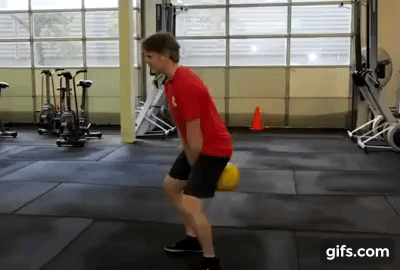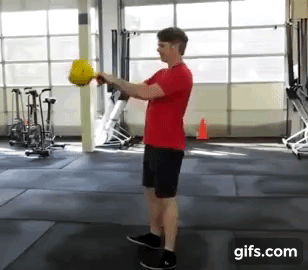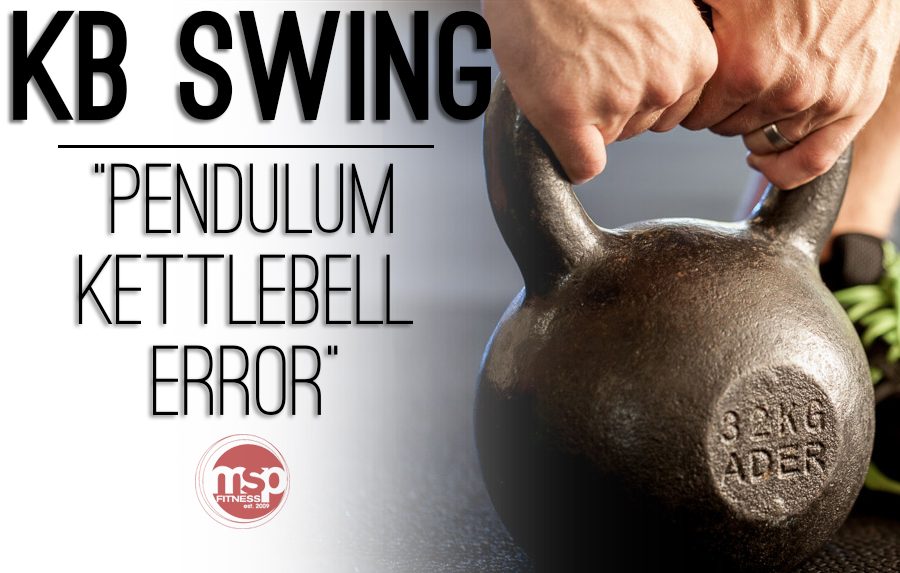Today I wanted to shoot this quick, one-off video on a less talked about, but rather common error that we see in kettlebell swings. As a quick side note, we do have an entire common error video that covers three of the biggest issues with people’s swings; but I want to deal with one in particular that I’m going to dub “The Pendulum Error”.
 I first noticed this issue by observing their knees. I noticed a rocking back and forth of the feet that caused their shin angle to change while swinging the bell. Admittedly this stumped me for a minute. I was watching clients do it, and I’m like, “I know this isn’t ideal, but what’s actually happening?” I think I finally figured out the key or the answer.
I first noticed this issue by observing their knees. I noticed a rocking back and forth of the feet that caused their shin angle to change while swinging the bell. Admittedly this stumped me for a minute. I was watching clients do it, and I’m like, “I know this isn’t ideal, but what’s actually happening?” I think I finally figured out the key or the answer.
When we are talking about kettlebell swings we are talking about the hip hinge movement pattern. Hip hinging is like the top quarter of the deadlift being returned to the floor OR simply pushing the hips back from a standing position, keeping the shins relatively vertical and upper body connected through the pelvis. If I’m hinging properly, the chest is driven over, counter balancing the posterior shift of the hips, and visa versa
This “Pendulum Error” on kettlebell swings is essentially an improperly performed hip hinge. The mistake happens as the knees unlock first, versus sending the hips back off unlocked knees. When the knees unlock first the lifter, or the athlete, drops vertically, then finally hinges shifting posteriorly with the hips. Not only is this problematic from an efficiency standpoint, but we’re witnessing looseness taking place in the hamstrings, where engagement ought to be. The hips is where our power comes from in the swing. When an individual hinges back, loading up the system properly, we’ve got support. If they drop their knees, the position is soft, unable to bear heavy loading. This is where we see such a rocking or pendulum position.
 Closing out, rather than bending substantially at the knees, dropping the center of mass and swinging through, we tell our clients experiencing this issue to stay engaged and wait for the bell to come back until you have to open the hips at the last moment. I’ll often use the cue that while kettlebell swinging, the hips should be viewed as a trap door. Open-Close. Swish-Swash. I literally want to see them waiting to hinge until the bell demands it, not opening early and risking excessive knee flexion. If their doing it right, you’ll see their shins stay vertical as they finish each repetition.
Closing out, rather than bending substantially at the knees, dropping the center of mass and swinging through, we tell our clients experiencing this issue to stay engaged and wait for the bell to come back until you have to open the hips at the last moment. I’ll often use the cue that while kettlebell swinging, the hips should be viewed as a trap door. Open-Close. Swish-Swash. I literally want to see them waiting to hinge until the bell demands it, not opening early and risking excessive knee flexion. If their doing it right, you’ll see their shins stay vertical as they finish each repetition.
Hopefully, that gives you a little more insight to the “Pendulum Error”. If you’ve never performed kettlebell swings, worry not, we’ve got a great video to show you how.
-Written by Michael S. Pilhofer
If you are in the Minneapolis / St. Paul area and are looking for somewhere to learn, train, and take care of your body for the long haul, look no further than MSP Fitness. Check out some of our program offerings or CONTACT US today!


